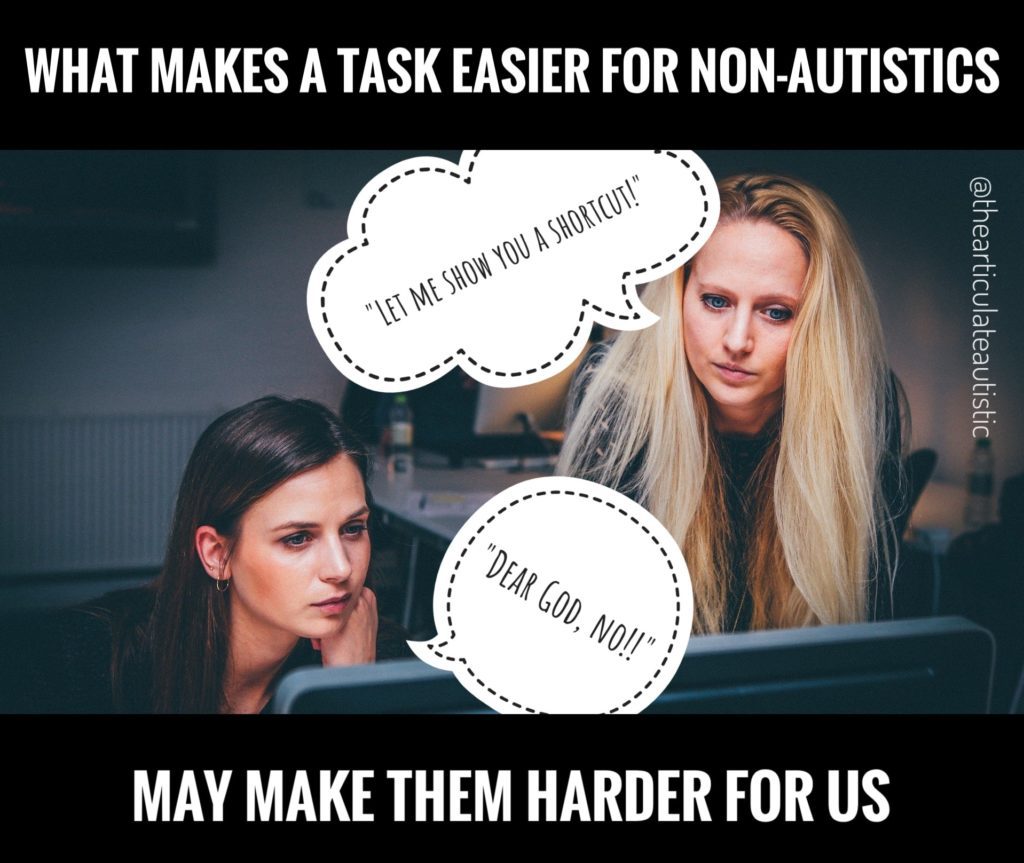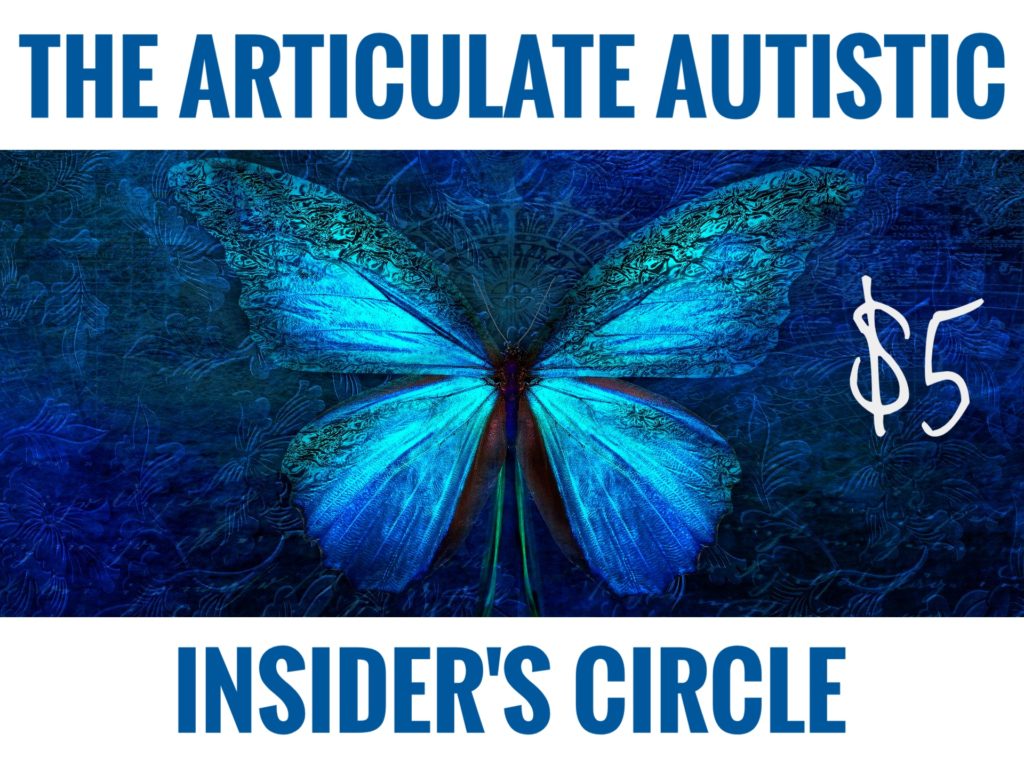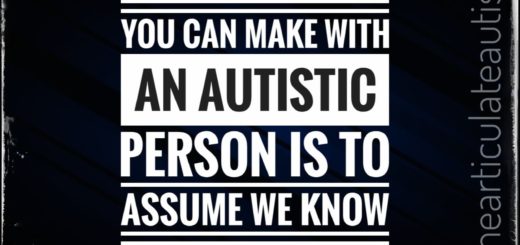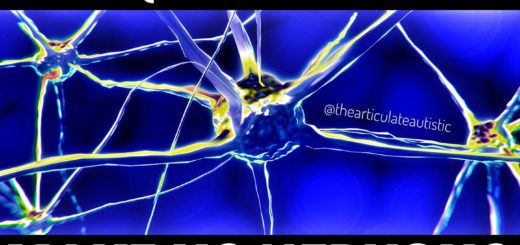What Makes a Task Easier for Non-Autistics May Make Them Harder for Us

“Let me show you a shortcut.” No!! While this sentence might not strike the same amount of terror in my heart as say, “You know what you did”, it’s definitely in the top 20.
For me, once I learn how to do something one way or learn how to get to a place one way, I will do it that way until the day I die if given the option.
Why so rigid, you may wonder? Well, I can’t speak for every autistic person, but I will say that, for me, it’s not so much a matter of rigidity, but mental mapping.
Also, learning is both traumatic and exhausting for me, so, once I finally “get” something, I’m able to do it on autopilot (which takes up far less energy).
Showing me a “new and easier” way will not help, it will only hinder. In fact, in most cases, it would be like having to learn the task from scratch.
Then, and this is the worst part, I will screw up so epically!
Before GPS, I would have to travel with a sweat-soaked computer printout of driving directions with my own symbols on it and go back and forth 3-5 times just to HOPE to drive without needing the directions.
Plus…f*$%^ing MapQuest!! If you get it, you get it. 😉 If you don’t, those damned directions would take you to space before it took you where you needed to go. A joke, of course, but sadly, not that far off.
So, I would finally memorize the drive, and somebody would give me a “shortcut” and proceed to talk over me even if I would frantically tell them to stop.
(In so doing, the were effectively taking the pins out of my mental map and putting them in different spots that made no sense to me.)
By the time I was behind the wheel of my car again, the two routes would be mish-mashed together in my head, and I would get hopelessly lost, panicking and sobbing all the way.
Needless to say, the shortcut did NOT help!
It’s the same with any other type of instruction. I learn it one way, I do it one way. As soon as someone tries to cram new information into my head, several steps fall out of my brain and get replaced with snippets of other steps from the so-called “easy” shortcut, and then nothing makes sense to me anymore.
Please, non-autistics, be mindful of this when teaching, training, or otherwise communicating with an autistic person.
Ask if we want to learn an easier way or a better way, and don’t talk over us while we’re trying to stop you. Listen and respect that we know one way, and it gets the job done.
I don’t care if you can cut 11 steps down to 3, I would much rather take a little longer to get the task done than white-knuckle panic attack my way through your 3 steps, forgetting 2, mixing it with 7 from the original instructions, and then just giving up altogether.
I know you’re trying to be helpful, but unless you want to see me (or your autistic loved one) curled up into a dissociative ball, let us do things the way we’ve learned.
Want downloadable, PDF-format copies of these blog posts to print and use with your loved ones or small class? Click here to become a Patreon supporter!





1 Response
[…] for years, I still half-expect someone to tell me I’m “doing it wrong” and try to show me a “better way”, thus interrupting me AND erasing my mental map for the […]